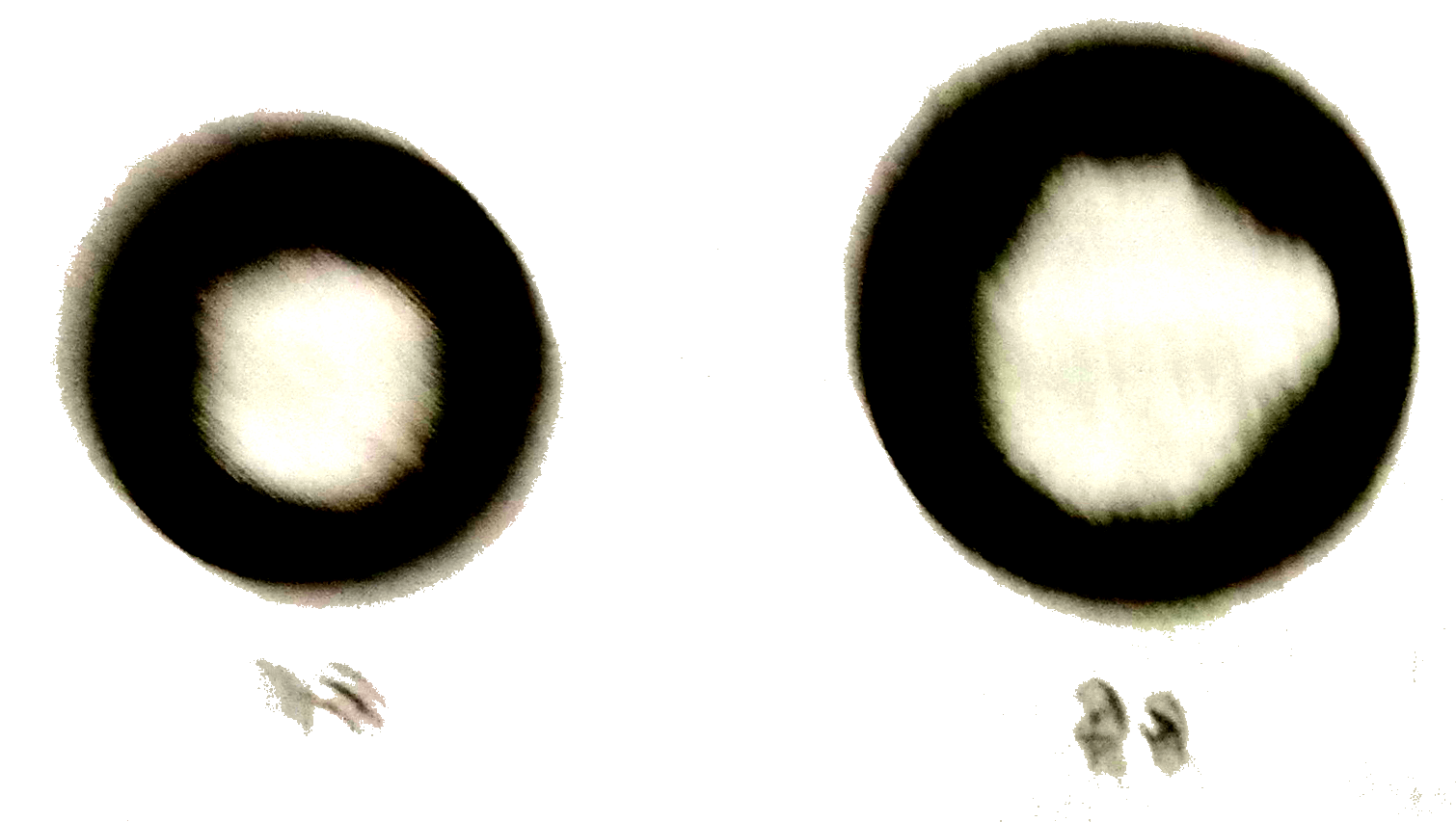Complete Solutions to Multiple choice questions (Type-I) of chapter STRUCTURE OF ATOM of Class 11 book with complete answers and questions
| Class 11 | CHEMISTRY |
| Chapter | STRUCTURE OF ATOM |
| DINESH COMPANION CHEMISTRY | Multiple choice questions (Type-I) |
| Number Of Questions | 30 |
| Academic Year | 2023-24 |
Which of the following conclusions couldnot be derived from Rutehrford's a-paticle scattering experiment?
View SolutionWhich of the following options does not represent ground state electronic configuration of an atom?
View SolutionThe probability density plots of 1 s and 2s orbitals are given in figure.

The density of dots in a region represetns the probability density of finding electrons in the region. On the basis of above diagram which of the following statements is incorrect?
View SolutionWhich of the following statement is not correct about the characterstics of cathode rays
View SolutionWhich of the following statements about the electron is incorrect?
View SolutionWhich of the following properties of atom could be explained correctly by Thomson model of atom?
View SolutionTwo atoms are said to be isobars is
View SolutionThe number of nodes in `3p` orbital
View SolutionNumber of angular nodes for 4d orbtial is.........
View SolutionWhich of the following is responsible to rule out the existence of definite paths or trajectories of electrons?
View SolutionTotal number of orbitals associated with thrid shell will be.....
View SolutionOrbital angular momentum depends on .........
View SolutionChlorine exists in two isotopic forms `Cl-37` and Cl-35 but its atomic mass is 35.5. this indicates the ratio of Cl-37 and Cl-35 is appromimately
View SolutionWhich one of the following pairs of ions have the same electronic configuration?
View SolutionFor the electrons of oxygen atom, which of the following statemetns correct?
View SolutionIt travelling at same speeds, whichof the following mater waves have the shortest wavelength?
View SolutionIdentify the paris which are not of isotopes?
View SolutionOut of the folowing paris of electorns, identify the pairs of electrons present in degenrate orbitals.
View SolutionWhich of the following sets of quantum numbers are correct?
n l m n l m
View SolutionIn which of the following pairs, the ions are iso-electronic ?
View SolutionWhich of the following statements concerning the quantum numbers are correct?
View SolutionMatch the following species with their corresponding ground state electronic configuration.
`{:(,"Atom/lon",,"Electronic configuration",),((a),"Cu",("i"),1s^(2)2s^(2)2p^(6)3s^(2)3p^(6)3d^(10),),(("b"),"cu"^(2+),("ii"),1s^(2)2s^(2)2p^(6)3s^(2)3p^(6)3d^(10)4s^(2),),(("c"),"Zn"^(2+),"(iii)",1s^(2)2s^(2)2p^(6)3s^(2)3p^(6)3d^(10)4s^(1),),(("d"),"cr"^(3+),"(iv)",1s^(2)2s^(2)2p^(6)3s^(2)3p^(6)3d^(9),),(,,"(v)",1s^(2)2s^(2)2p^(6)3s^(2)3p^(6)3d^(3),):}`
View SolutionMatch the quantum numbers with the information provided by these.
`{:(,"Quantum number",,"Information provided",),("(a)","Principal quantum number","(i)","orientation of the orbital",),("(b)","Azimuthal quantum number","(ii)","energy and size of orbital",),("(c)","Magnetic quantum number","(iii)","spin of electron",),("(d)","Spin quantum number","(iv)","Shape of the orbital",):}`
View SolutionMatch the following rules with their statement :
`{:(,"Rules",,"Statements",),(("a"),"Hund's Rule",("i"),"No two electrons in an atom can have the same set of four quantum numbers.",),("(b)","Aufbau Principle",("ii"),"Half-filled and completely filled orbitals have extra stability.",),("(c)","Pauli Exclusion Principle",("iii"),"Pairing of electrons in the orbitals belonging to the same subshell does not take place until each orbital is singly occupied.",),(("d"),"Heisenberg's Uncertainty","(iv)","It is impossible to determine the exact position and exact momentum of a subatomic particle simultaneously.",),(,,("v"),"In the ground state of atoms, orbitals are filled in the order of their increasing energies.",):}`
View SolutionMatch the following :
`{:("(a)","X-rays",("i"),"v"=10^(0)-10^(4)"Hz",),(("b"),"UV",("ii"),"v"=10^(10)"Hz",),("(c)","Long radio waves","(iii)","v"=10^(16)"Hz",),("(d)","Microwave",("iv"),"v"=10^(18)"Hz",),(,,,,):}`
View SolutionMatch the following :
`{:("(a)","Photon","(i)","value is 4 for N-shell",),(("b"),"Electron","(ii)","Probability density",),("(c)",psi^(2),("iii"),"Always negative value",),(("d"),"Principal quantum number n ",("iv"),"Exhibits both momentum and wavelength",):}`
View SolutionMatch species given in Column I with the electronic configuration given in Column II.
`{:(,"Column I",,"Column II",),(("a"),"cr",("i"),[Ar]3d^(8)4s^(0),),(("b"),Fe^(2+),("ii"),[Ar]3d^(10)4s^(1),),(("c"),Ni^(2+),("iii"),[Ar]3d^(6)4s^(0),),(("d"),Cu,("iv"),[Ar]3d^(5)4s^(1),),(,,("v"),[Ar]3d^(6)4s^(2),):}`
View SolutionAssertion(A): All isotopes of a given element show the same type of chemical behaviour.
Reason(R) The chemical properties of an atom are controlled by the numb er of electron s in the atom.
View SolutionAssertion(A) Black body is an ideal body that emits and absorbs radiations of all frequencies.
Reason(R) The frequency of radiation emitted by a body goes from a lower frequency to higher frequency with an increase in temperature.
View SolutionAssertion (A) It is impossible to determine the exact position and exact momentum of an electron simultaneously.
Reason (R) The path of an electron in an atom is clearly defiened.
View Solution
Multiple choice questions (Type-I) questions and complete solutions for chapter STRUCTURE OF ATOM of S DINESH & CO CHEMISTRY (HINGLISH) of Class 11
All Exercises from DINESH COMPANION CHEMISTRY Class 11 CHEMISTRY STRUCTURE OF ATOM
- Additional important questions
- Assertion-Reason Type Questions
- Assignment
- Board Examinations
- Competitive Examinations
- Comprehension Linked MCQs
- Concept based questions
- Example
- H.O.T.S. Conceptual Questions
- H.O.T.S. Numerical problems
- Multiple choice questions (MCQs)
- Multiple choice questions (Type-I)
- Problems for practice
- Reason Type Questions
- Select the correct answers
- Short Answer type Questions
- Value based questions